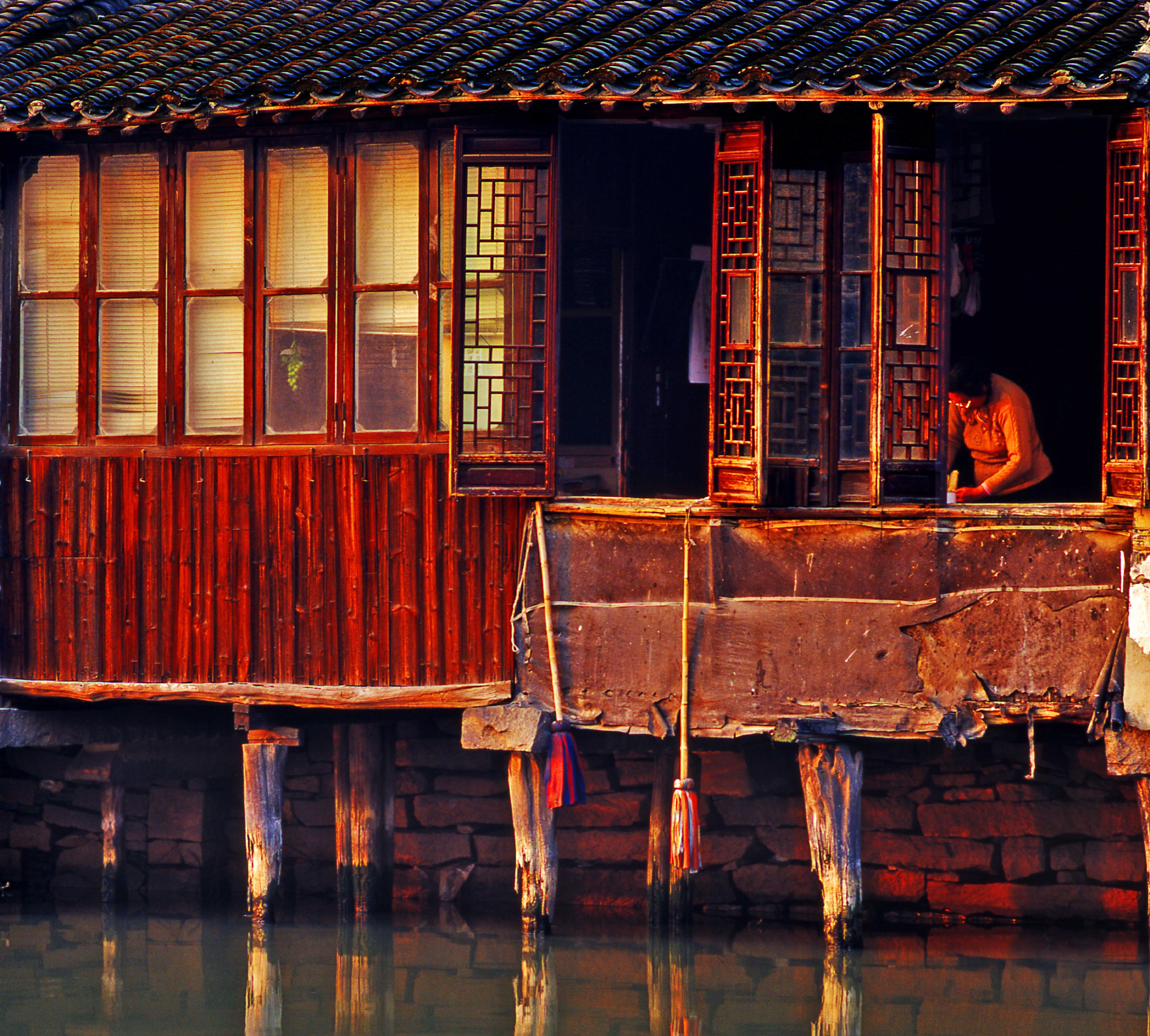Flowers in spring, cicadas in summer, maple leaves in autumn and snow in winter. In winter, the city will dress itself in a pure color with the help of the snow. In southern city like Suzhou, it is not often to see snow in winter. But once it snows, Suzhou becomes Gusu and travels back to the past, displaying a real inky Jiangnan style. As the thin snowflakes fall gently, Suzhou is covered with a light silver veil, creating a hazy and poetic feeling. Nothing would ever be comparable to this dreamy snow scenery.
Shantang Street is located in the northwest of the ancient city of Suzhou, Jiangsu Province. Through the ages, mountains and ponds have been the favorite places of emperors and kings, writers and poets. Both Qianlong and Kangxi (emperors of Qing Dynasty) even the most well-known artist Tang Bohu spent days wandering along side the Shantang River. The mountains and ponds covered by snow add a quiet charm to this lovely Jiangnan city.
 The Seven-mile Shantang Street
The Seven-mile Shantang Street
Shantang Street, which is built by the river, starts from the north end of Changxu Road in the east, and ends at the west end of Xishan Temple Bridge at the southwest foot of Huqiu. It is about seven miles (about 3.5 km) long, so it is called “The Seven-mile(Qili) Shantang”.
Some people say, Suzhou is a city where sunny days are not comparable to rainy days, rainy days are not comparable to snowy days.
Snowy Shantang Street, most of the charm of Gusu was shown incisively and vividly. Accompanied by the music of Suzhou Pingtan, walking along the stone road, passing the special snack shops on both sides of the street, the ancient feeling is back in the city. Once you pass the silk embroidery shops, you can see all the excellent works of embroidery masters that have a long history of more than thousands of years. The bustling crowd in front of the ancient opera stage watch the drama on stage as if the drama is a chapter of their life.
Black tiles and bricks with slate road, love oath under the oil paper umbrella.
In the snow-covered Shantang Street, you can hold an oil paper umbrella and walk on the ancient stone bridge. You watch the scenery from the bridge whereas the person, standing on the bridge, is watching you, who is more beautiful than the scenery.
A glance at Shantang from painted boats
In ancient times, in order to facilitate water and land transportation in Suzhou, the Shantang River was dug from Huqiu in the west to Chang Gate in the east. Shantang Street was also named after Shantang River.
The ancients travel mountains and lakes, mostly by boat, sitting in high-grade delicate painted boats, drinking wine and tea, listen to the boatwomen playing Jiangnan traditional music instruments, looking at local people of the water village on the shore.
Today, you can still sit on painted boats, wandering along the Shantang River, and see the people living in the water villages on both sides of the river. Close your eyes, forget the fatigue of the journey and troubles for a moment, just listen to the boatwoman speak in the soft Wu dialect, narrating the story of the past. Ride the painted boat from the Shantang River, this “artistic city on the riverbank” will show you another side of its beauty.
Watch the snowflakes falling on the long river, falling on the street, falling on the oil paper umbrella, falling on the tip of people’s hearts and most charmingly, falling on the water of a typical Jiangnan city.
Shantang Kunqu Opera House
Kunqu Opera, originated in Kunshan area of Suzhou, is one of the oldest traditional operas of the Han nationality. It is also a treasure of traditional culture and art of the Han nationality in China, especially of opera art. Since Ming dynasty, kunqu opera began to hit the country, people at that time, both the nobles and literati, even ordinary people, loved kunqu opera. People appreciated the beauty of love in the tune of “the Peony Pavilion” , realized the cruelty of reality in the lyrics of “the Palace”, sensed emotions in bitterness in the gentleness of “the Peach Blossom Fan”.
Shantang Kunqu Opera House is the only venue in Suzhou that performs traditional Kunqu opera all day long. The layout of the opera house is designed to restore the whole picture of theatrical cast in the style of Ming and Qing Dynasties. It is a Kunqu display base integrating performance, arrangement, practice and teaching.
In cold snowy days, staying in the house, making a pot of tea, listening to artists with unique singing, telling the distant legend, thoughts will travel back to 600 years ago. Glimpse from the second floor leaning on the window, you can enjoy a panoramic view of the Jiangnan scenery with bridges and running water flowing through every household.
Winter in Suzhou is quiet. The snowy night of Shantang is mild and beautiful. Unlike spring when grass grows and warblers fly,unlike summer when thick and heavy color could be seen everywhere, unlike autumn when crops and fruits harvest, winter is a period when ancient thoughts from far away come across your mind, when a picturesque Jiangnan painting scroll display itself before you. This is Shantang, this is how Suzhou is.
